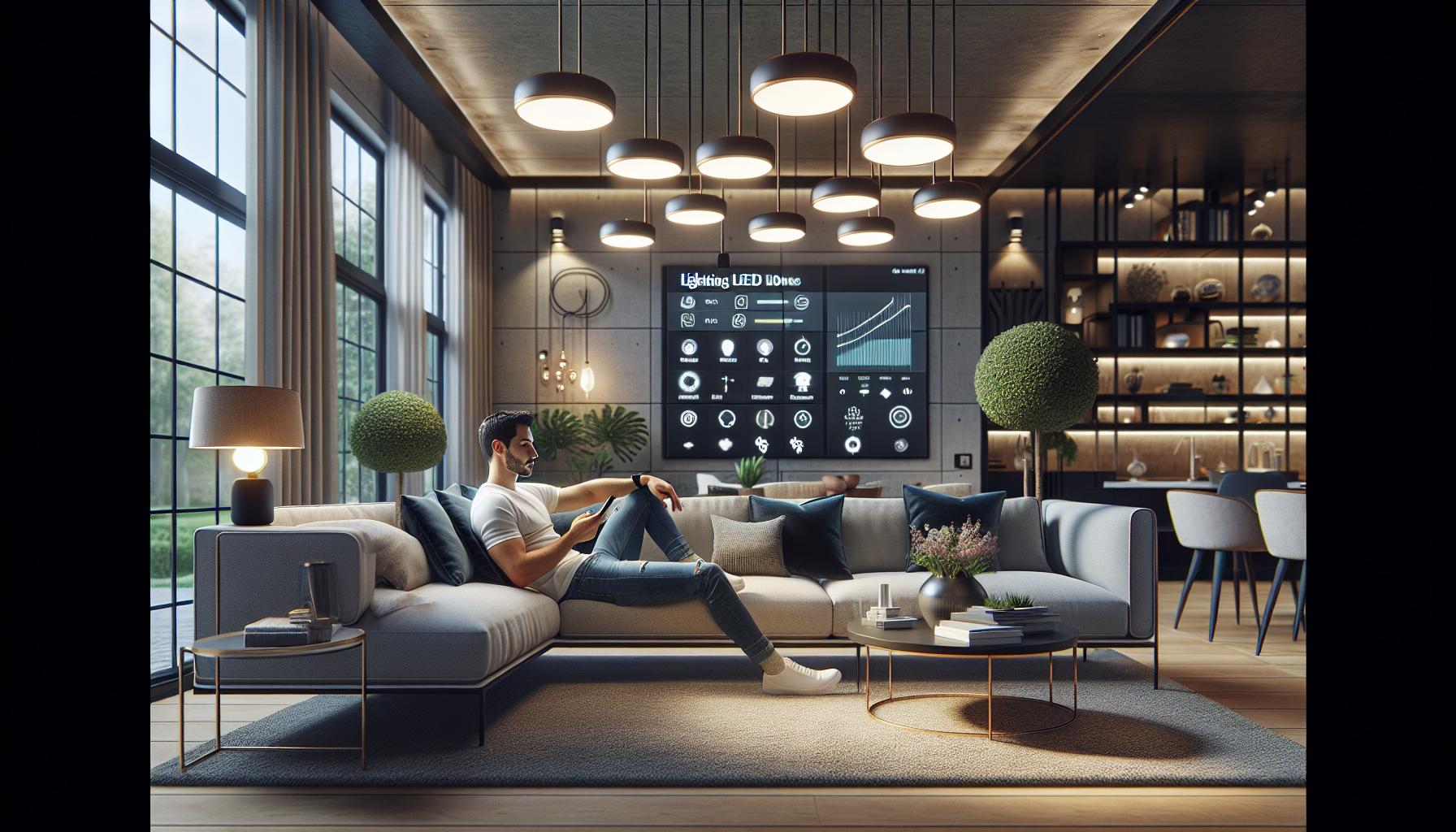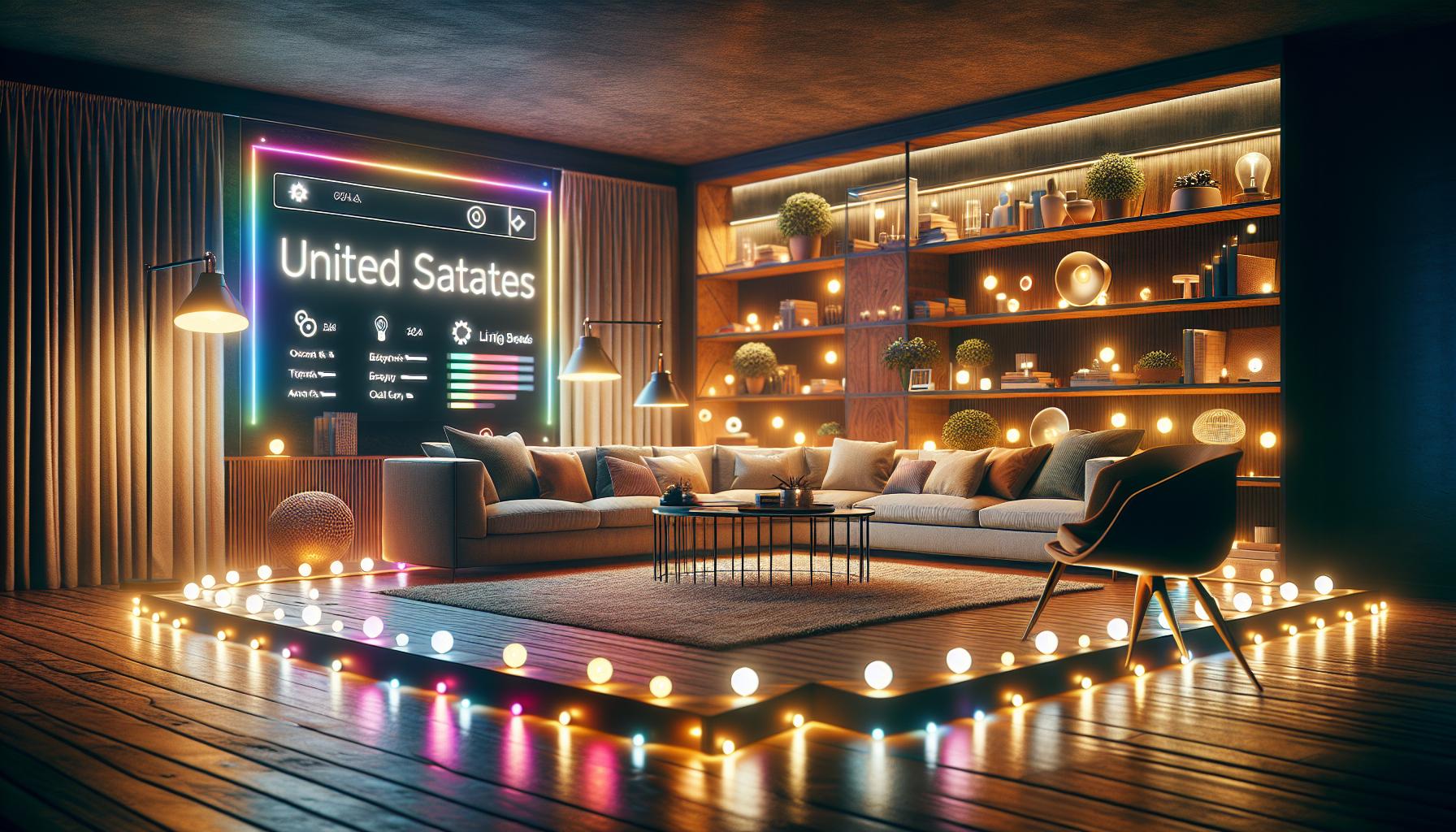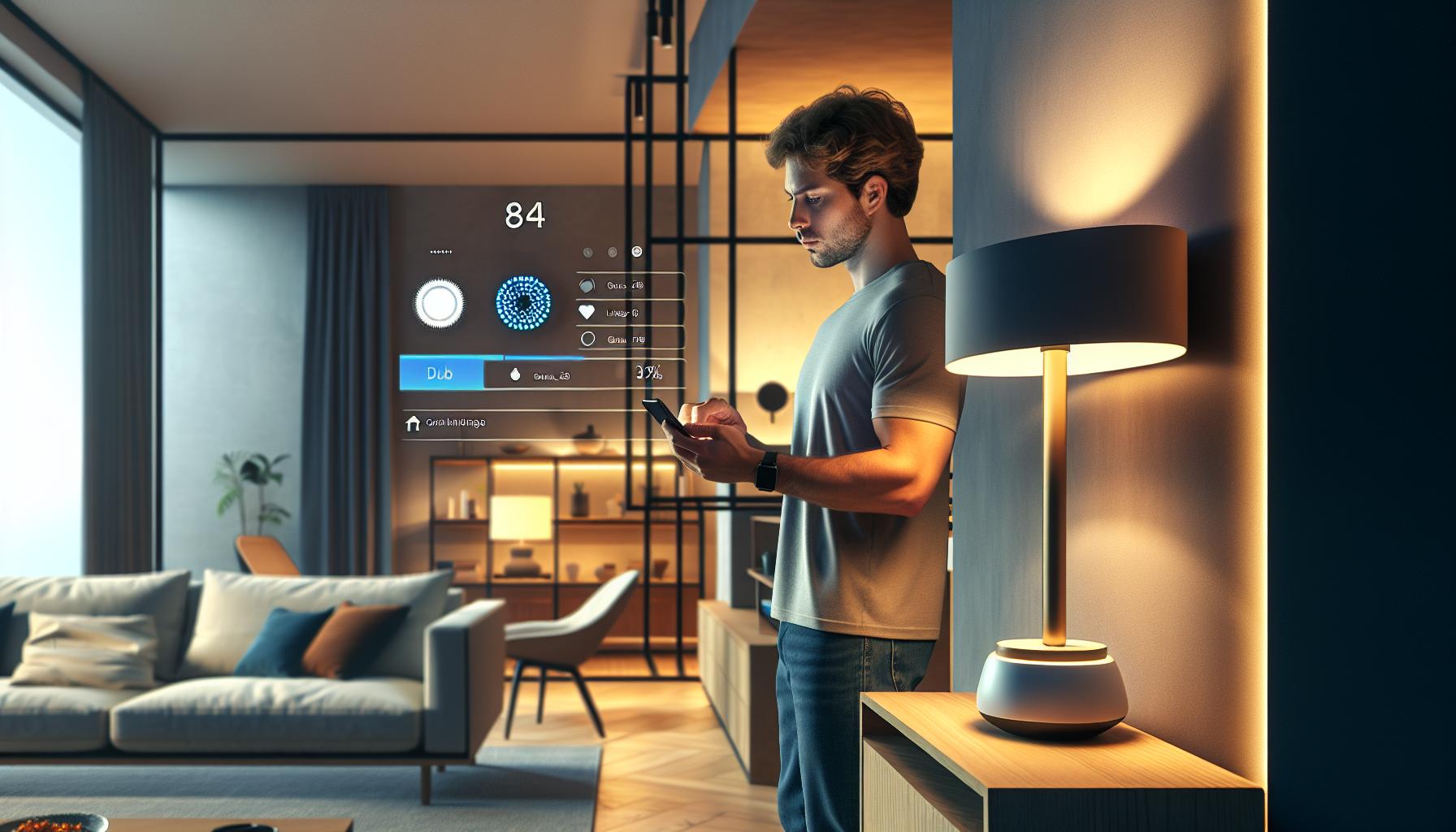Key Takeaways
- Transformative Impact: Smart home lighting enhances the ambiance and functionality of living spaces, allowing customization based on mood and lifestyle.
- Energy Efficiency: Smart bulbs use up to 80% less energy than traditional options, significantly lowering utility bills and reducing energy waste through automation and monitoring.
- Enhanced Security: Features like motion sensor lights and scheduled light activation can simulate occupancy, providing a safer home environment and deterring potential intruders.
- Customizable Control: Users can control lighting through mobile apps, voice commands, or automated schedules, ensuring convenience and adaptability throughout daily routines.
- Diverse Options: Innovative solutions like smart light strips and color-changing bulbs offer flexible designs and dynamic moods, catering to personal preferences for decor and atmosphere.
- Integrative Systems: Smart lighting can sync with other smart devices, enhancing overall home automation and creating an efficient, interconnected living space.
Smart home lighting has transformed the way people interact with their living spaces. With the right ideas, anyone can create an ambiance that suits their mood and lifestyle while enhancing energy efficiency. From automated systems to color-changing bulbs, the possibilities are endless.
Imagine controlling your lights with a simple voice command or setting them to adjust automatically as the sun sets. These innovations not only offer convenience but also elevate the aesthetic appeal of any room. As technology continues to evolve, exploring smart lighting solutions becomes essential for modern homeowners looking to maximize comfort and style.
Smart Home Lighting Ideas
Smart home lighting ideas transform living spaces by enhancing functionality and ambiance. These ideas incorporate various technologies that cater to individual preferences and requirements.
- Automated Lighting Systems: Automated lighting systems allow users to schedule lighting patterns. Lights can turn on or off based on daily routines to maximize convenience.
- Smart Bulbs: Smart bulbs enable users to change brightness and color. Options range from soft whites to vibrant hues, offering customizable lighting schemes for different activities.
- Motion Sensor Lights: Motion sensor lights enhance security and convenience. They automatically activate when motion is detected, illuminating areas for safety and ease of access.
- Voice-Activated Controls: Voice-activated controls integrate with smart home assistants. Users can adjust lighting through simple voice commands, adding hands-free convenience.
- Zoned Lighting: Zoned lighting means creating specific lighting settings for different areas. This approach allows for tailored atmospheres that align with each room’s purpose.
- Dimmer Switches: Dimmer switches provide flexibility in light intensity. Users can set the mood by easily adjusting the brightness for various occasions.
- Color Temperature Adjustment: Color temperature adjustment lets users choose warm or cool light. Preferences influence productivity, relaxation, or focus levels depending on the time of day.
- Smart Light Strips: Smart light strips offer an innovative way to add ambient lighting. They can be placed around furniture or architectural features to create dynamic visual effects.
- Energy Monitoring: Energy monitoring features track consumption. Users can identify patterns and adjust usage to enhance energy efficiency.
- Integration with Other Smart Devices: Smart lighting systems can integrate with other smart home devices. This synchronization boosts overall functionality, seamlessly enhancing user experiences in daily life.
Exploring these smart home lighting ideas allows homeowners to elevate comfort, functionality, and efficiency in their living spaces.
Benefits of Smart Home Lighting

Smart home lighting provides numerous advantages, enhancing both convenience and comfort in living spaces. Among these benefits are energy efficiency and enhanced security.
Energy Efficiency
Energy efficiency represents a significant benefit of smart home lighting. Smart bulbs typically use 80% less energy than traditional incandescent bulbs, providing immediate savings on utility bills. Systems with automation enable users to schedule lights to turn off when not in use, further reducing energy waste. For instance, motion sensor lights automatically deactivate after a designated period of inactivity, ensuring lights aren’t left on unnecessarily. Additionally, energy monitoring features within smart lighting systems allow homeowners to track usage patterns, identify energy drains, and adjust settings for maximum efficiency.
Enhanced Security
Enhanced security becomes a critical benefit of smart home lighting. Smart lighting systems can simulate occupancy by scheduling lights to turn on and off at different times, deterring potential intruders. Motion sensor lights illuminate dark areas, providing safety when entering or leaving a home. Moreover, integrating smart lighting with security cameras and alarms creates an interconnected system that enhances overall safety measures. Homeowners can remotely control outdoor lights via mobile devices, ensuring proper illumination of entrances and driveways to maintain security at all times.
Popular Smart Lighting Options

Smart lighting options offer versatility and efficiency for modern homes, enhancing both ambiance and functionality. These options transform spaces and improve energy management.
Smart Bulbs
Smart bulbs replace traditional bulbs with energy-efficient alternatives that connect to home networks. They provide customizable brightness and color options, allowing users to adjust settings via apps or voice commands. Smart bulbs can integrate with smart home systems for automation, enabling scheduling based on routines. For example, setting a warm white light in the morning promotes alertness, while cooler tones in the evening encourage relaxation. Some smart bulb models support music integration, syncing light changes to beats. Energy savings are significant, as smart bulbs use up to 80% less energy than incandescent bulbs.
Smart Light Strips
Smart light strips offer flexible installation options and customizable RGB colors for ambient lighting effects. They can be adhered to walls, under cabinets, or around furniture, creating dynamic atmospheres. Users control smart light strips through mobile apps or voice assistants, adjusting brightness and color schemes easily. Popular among gamers and decorators, these strips add personality to living spaces. Some models include features such as music synchronization, responding to sound cues for an immersive experience. Smart light strips contribute to energy efficiency, allowing users to create mood lighting without high power consumption.
Innovative Smart Home Lighting Ideas

Smart home lighting enhances comfort and style through various innovative concepts. Here are some noteworthy ideas to consider.
Mood Lighting
Mood lighting significantly impacts ambiance in any space. Smart bulbs offer adjustable color temperatures, allowing users to select cool tones for productivity or warm hues for relaxation. Programmable settings enable automatic transitions throughout the day, adapting to different activities. For example, a living room could shift from bright white light for watching a movie in the evening to soft amber light for a cozy reading session. Smart color-changing bulbs also provide a vast color palette, creating custom atmospheres for special occasions or everyday use.
Automated Lighting
Automated lighting systems streamline home lighting experiences by adapting to user routines. Scheduling capabilities allow lights to activate or deactivate based on specific times or events, ensuring comfort and energy savings. For instance, lights can turn on gradually in the morning to simulate sunrise and aid awakening. Motion sensors enhance this concept, activating illumination when individuals enter rooms and turning off automatically when they leave. Furthermore, integrating automated lighting with smart home platforms enables control via smartphones or voice assistants, providing seamless convenience for homeowners.
Choosing the Right Smart Lighting System
Selecting the appropriate smart lighting system involves evaluating specific features that match individual needs and preferences. Assessing compatibility with existing devices ensures seamless integration, while focusing on the type of lighting, such as smart bulbs or smart light strips, is vital for meeting various functional requirements.
Reviewing control options plays a key role in enhancing user experience. Options include mobile apps, voice commands, and physical switches. Users should consider the interface that feels most intuitive. Researching installation processes, whether wired or wireless, helps in choosing systems that fit the home environment.
Evaluating energy efficiency is crucial, as smart lighting can significantly reduce utility costs. Smart bulbs offer up to 80% less energy consumption compared to traditional counterparts. Look for systems that include energy monitoring features to track usage and gain insights into consumption patterns.
Exploring additional features adds flexibility to the user’s experience. Systems with customizable scenes allow for personalized lighting settings based on time of day, activity, or mood. Motion sensors enhance both security and convenience, automatically turning lights on or off depending on presence.
Finally, considering the budget is essential in the decision-making process. Explore various brands and their offerings, keeping in mind that investing in quality systems usually results in longer lifetime performance and improved functionality.
Smart Home Lighting
Embracing smart home lighting opens up a world of possibilities for enhancing both comfort and efficiency. With the right systems in place homeowners can effortlessly create personalized atmospheres that cater to their unique lifestyles. The integration of smart bulbs motion sensors and automated controls not only elevates ambiance but also promotes energy savings and security.
As technology continues to evolve exploring innovative lighting solutions will remain essential for those looking to transform their living spaces. Investing in quality smart lighting systems ultimately leads to a more enjoyable and efficient home environment.